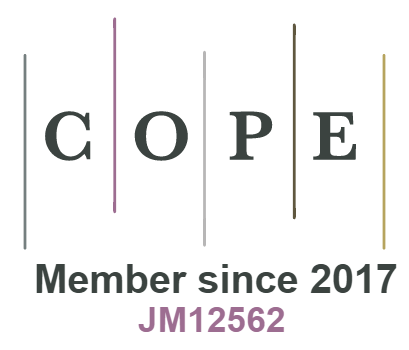The Relationship between Technological Factors and Inter-Organizational Information Systems Adoption by Universities in Kenya
DOI:
https://doi.org/10.18034/ei.v1i1.217Keywords:
IOIS adoption, Technological factors, Universities in KenyaAbstract
Kenya government, in collaboration with other stakeholders involved in enhancing teaching and research in the learning institutions have constructed a terrestrial fiber-optic network that connects most institutions of higher learning to enable them integrate their facilities for the purpose of sharing resources. Despite these efforts, adoption of Inter-Organization Information Systems (IOIS) by universities in Kenya is far from being realized. This creates the need of finding out the relationship between the IOIS technological factors and the IOIS adoption. This study filled this gap by analyzing IOIS technological determinants of IOIS adopting in the universities in Kenya, given the mixed results from empirical evidence on IOIS adoption generally. A logit regression procedure was used to analyze the collected data. Two factors were found to hinder the IOIS adoption, while one factor was found to motivate IOIS adoption.
Downloads
References
Adogbji, B., and Akporhonor, A. B. (2005). The Impact of ICTs (internet) on research and studies; The experience of Delta state university students in Abraka Nigeria. Library HiTech News, 1 (10), 17-21.
Agresti, A. (1990). Categorical Data Analysis. John Wiley and Sons, New York, 24-32.
Alimazighi, Z. and Bouchbou,T K. (2009). A framework for identifying the critical factors affecting the decision to adopt and use inter-organizational information systems. International journal of human and social sciences 4:7 2009, 509-511.
Cabrera, A. F. (1994). Logistic regression analysis in higher education: An applied perspective. Higher Education: Handbook of Theory and Research, Vol. 10, 225–256.
Cooper, D. and Schindler, S. (2003). Business Research Methods, 7th Edition, Boston, McGraw-Hill.
Gikandi J.W. and Bloor C. (2010). Adoption and effectiveness of electronic banking in Kenya. Electronic Commerce Research and Applications 9 (2010), 277–282.
Johnston, H.R., and Vitale, M.R. (1988). Creating Competitive Advantage with Inter-organization Information Systems. MIS Quarterly (12: n), June 1988, 153-165.
Kaefer F. and Bendoly E. (2000). The adoption of electronic data interchange. A model and practical tool for managers. Decision Support Systems 30, 23-32.
Kashorda M., Waema T. (2009). E-Readiness Survey of East African Universities. Kenya Education Network (KENET), 13-37.
Kashorda M., Waema T. , Omosa M. and Kyalo V. (2006). E-Readiness Survey Of Higher Education Institutions in Kenya. Kenya Education Network Trust, 16-32.
Lei, P.W., and Koehly, L. M. (2000, April). Linear discriminant analysis versus logistic regression: A comparison of classification errors. Paper presented at the annual meeting of the American Educational Research Association. New Orleans, LA.
Macharia J. and Nyakwende E. (2009). Factors affecting the adoption and diffusion of Internet in higher educational institutions in Kenya. Journal of Language, Technology and Entrepreneurship in Africa Vol.1(2)2009: 1-3
Magutu P.O., Mwangi M., Nyaoga B.R., Ondimu G.M., Kagu M., Mutai K., Kilonzo H., Nthenya P. (2011). E-Commerce Products and Services in the Banking Industry: The Adoption and Usage in Commercial Banks in Kenya. Journal of Electronic Banking Systems. Vol. 2011, 1-8.
Nyangosi, R. and Arora J.S. 2009. Emergence of Information Technology in the Kenyan banking Sector: An empirical study. International Journal of Electronic Finance 3(2), 6-12.
Rahim M.M. and Kurnia S. (2004). Factors Influencing Benefits of Inter-Organizational Systems (IOIS) Adoption. San Diego international systems conference, 14-16 July, San Diego, USA, 1-5.
Republic Of Kenya (2006). Electronic Learning. National Information and Communications Technology (ICT) Policy. Ministry Of Information & Communications January 2006, 5.
Saunders, M;Lewis.P; Thonhill, A. (2007).Research methods for business students. 3rd edition, Great Britain, prentice hall.
Soliman K. S. and Janz B. D (2004). Inter-organization Information Systems. Exploring an Internet-Based Approach. Information and Management Volume 41, Issue 6, July 2004, 697-706.
Ssewanyana J. and Busler M. (2007). Adoption and usage of ICT in developing countries: Case of Ugandan firms. International Journal of Education and Development using Information and Communication Technology (IJEDICT), 2007, Vol. 3, Issue 3, pp. 49-59. Silverman, P.B. (1990). Information revolution in the Pacific rim: Implications for the '90s," Pacific Telecom Conference, Honolulu, Hawaii, 1990, 106-117.
Vadapalli, A. and Ramamurthy, K. (1997). Business use of the Internet: an analytical framework and exploratory study," International Journal of Electronic Commerce, Vol. 2, No. 2, Winter 1997-98, pp. 71-94.
--0--
Published
Issue
Section
License
Engineering International is an Open Access journal. Authors who publish with this journal agree to the following terms:
- Authors retain copyright and grant the journal the right of first publication with the work simultaneously licensed under a CC BY-NC 4.0 International License that allows others to share the work with an acknowledgment of the work's authorship and initial publication in this journal.
- Authors are able to enter into separate, additional contractual arrangements for the non-exclusive distribution of the journal's published version of their work (e.g., post it to an institutional repository or publish it in a book), with an acknowledgment of its initial publication in this journal. We require authors to inform us of any instances of re-publication.









